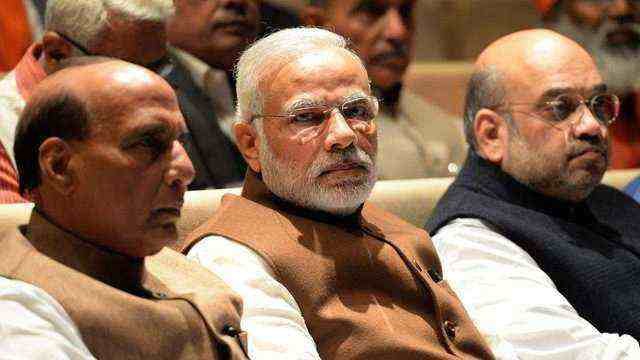
India’s economic numbers have for some time looked better than the facts warranted, feeding an overconfidence in New Delhi about the country’s prospects. Thankfully, that’s begun to change. The Reserve Bank of India, the International Monetary Fund, investment banks and ratings agencies have all recently cut their estimates of 2019 growth sharply. While some believe India’s official statistics may overstate growth by as much as 2.5 percentage points, even government statisticians are expected to release this week a more sober estimate for GDP growth between January and March of around 5.8%.
The best news is that Prime Minister Narendra Modi’s government, which has loudly touted its stewardship of the Indian economy, appears to have woken up to the scale of the problem. Many would argue that the slew of administrative and tax changes that Finance Minister Nirmala Sitharaman announced as stimulus measures last Friday weren’t bold enough. But that misses the key point: Sitharaman and her ministry at last seem to be willing to take criticism on board and to adopt a more realistic view of India’s economic position. That’s the first step toward fixing the economy.
Indeed, some of the reasons for disappointment are themselves grounds for optimism. The auto industry, for example, had hoped for tax cuts or budgetary support of some kind. You can see why they’re panicked; they’ve just had the worst month since December 2000, with sales of new passenger cars dropping by 35% year-on-year.
Smartly, though, the government resisted frantic lobbying from some of India’s most powerful companies. Instead of handing out a big tax break, the new measures addressed some of the regularity fuzziness that might have been suppressing demand for new cars. The government’s chief economist had some harsh words for bailout-seekers not just in the auto sector but finance and real estate: “If we basically expect the government to use taxpayers’ money to intervene every time when there are some ‘sunsets,’ then I think you introduce possible moral hazards as well as the possibility of a situation where profits are private and losses are socialized.” That would be, as he correctly noted, “anathema to the way the market economy functions.”
One reason the government seems to have embraced reality is that the revenue numbers in the federal budget are now known to have been massively overstated. There was, in fact, a revenue shortfall in the last financial year of 1.7 trillion rupees ($24 billion), almost a full percentage point of GDP; none of that was visible in the numbers laid before Parliament. That’s a scandal, and probably part of the reason why the seniormost bureaucrat in the finance ministry has been made to fall on his sword. Those who argue that India is in a sustained demand slump aren’t wrong. But the government doesn’t have the fiscal firepower to pull the economy out of it.
Most of us feared that, faced with this revenue shortfall and demands for both corporate and individual welfare payments, Modi’s government would respond as it has in the past -- by getting its tax officials to put the squeeze on taxpayers. After all, it looked like the government would have to raise revenue by 1.1% of GDP in 2019-20 if it were to make its fiscal targets.
But Sitharaman has been touring the country asking tax officers to cool it and to trust taxpayers more. Some of the measures she announced on Friday were meant to reduce tax officials’ arbitrary powers. The government seems to have reversed course following widely publicized criticism of “tax terrorism” even by businesspeople friendly to the ruling party. Modi himself hailed “wealth creators” in his speech to the nation on India’s Independence Day, August 15.
Of course, nothing in India goes exactly as one would wish. Ideally, the government would now focus on structural reform to energize demand and reinvigorate the tax base, while keeping to the fiscal straight and narrow. Instead, it seems content to make up the revenue gap through handouts of its own from the RBI: On Monday, we learned that the central bank-led, after the quietly acrimonious departure of two successive independent governors, by a former finance ministry bureaucrat -- would transfer, yes, 1.7 trillion rupees to the government this year. Hopefully, a newly realistic government will realize that such coincidences can’t be counted on forever.


.jpeg)

